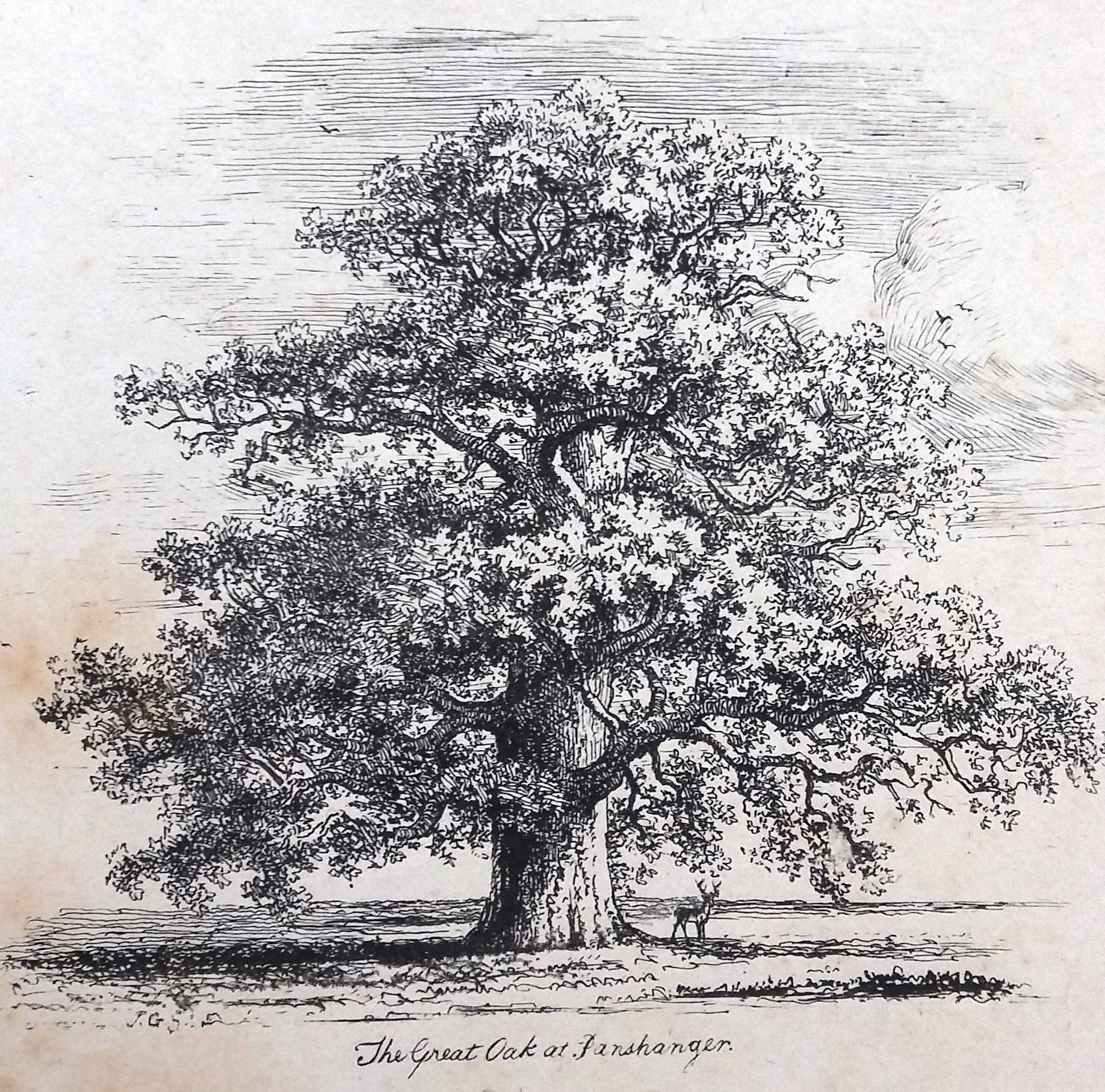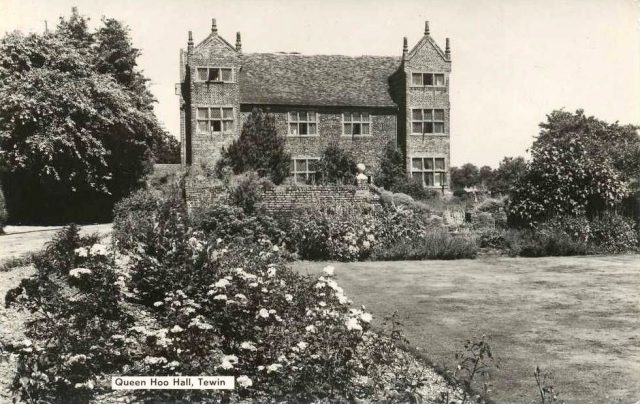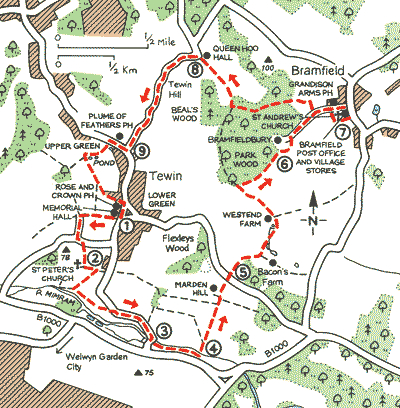Lower Green at Tewin, a pretty village midway between Welwyn and Hertford, 30 miles north of London and the perfect place for a circular countryside walk. We parked beside the green and just as I stepped out a football came flying past, but too quick for me to kick back, it continued into the road and lodged itself under our car. Which is why this picture appears so tranquil. The hectic to and fro momentarily interrupted. “Please mister, can we have our ball back?”
We took a path by the Memorial Hall that leads from the village over a corner of a great green carpet flooding across what must once have been an intricate patchwork of much smaller fields and hedges.
We escaped the wide open space and dived for cover down a narrow enclosed lane.
Snowdrop and crocus
Winter aconite
St Peter’s Church is set apart from the village beneath a crazy February sun.
St. Peter’s Church is the oldest building in the village and was probably first built around 604 AD on the site of the ancient Temple of Tew. This church was possibly destroyed at the time of the Norman Conquest. In 1086 it was rebuilt and the present building has gradually developed over the centuries, the last major restoration was by Earl Cowper of Panshanger in 1903.
Tewin is an ancient village whose history dates back to Saxon times circa 449 AD, and beyond. There are indications that people settled here many hundreds of years before the Romans invaded Britain. The name Tewin comes from the Anglo Saxon word “Tew”, God of War, and “Ing” means enclosure or meadow – the name varies over the centuries and in the Doomsday Book it is Tewinge and Theinge, and in the 16th century Tewinge, Tewing and Twying.
And perhaps once it was also known as Theunge.
A small selection of canvaswork kneelers made by parishioners celebrating village life.
Six ropes for six bells for change ringing Plain Bob Minor.
And there is music in these stained glass windows.
The grave of Lady Anne Grimston
According to legend she did not believe in the resurrection of the dead. “If there is life hereafter, trees will render asunder my tomb.” Which is indeed what has happened and she has been reborn as a tree.
Look closely and she is engulfing the first fence of iron railings.
This is now, today is Sunday 16th February, Anno Domini 2019.
We descended from the churchyard and walked by the woods where two hares were running.
I spoke to Howard next day and he told me he’d seen a pair of hares boxing just the day before.
Below the church we found an egret stalking the River Mimram.
Catkins catching the light.
Hedgerow Inscription
We followed the lane downriver to the bridge.
No Fishing
We’d done this walk before, once in 2009 and again in 2011, and both times we’d walked from the bridge alongside the river, through the water-meadows where cattle grazed, down to the next bridge.
Cross the bridge, climb stile on left to permissive path in water-meadows beside river. At single-arch bridge cross river. Leave water-meadows via kissing gate.
It reminded me of childhood picnics by the River Hodder in the Forest of Bowland, exploring the caves in the hollowed-out roots of riverside trees. A long ago pastoral idyll. But this time round we found our way was barred. The gap in the hedge had been knitted together, the stile removed and permission revoked by a mean-spirited landowner. The permissive path was now just a memory.
So we walked beside the B1000 along a dangerously non-existent path to the next public footpath.
Our map shows a path leads east from here to Panshanger.
The park contains the largest maiden (not pollarded) oak in the country, with a circumference of 7.6 metres. It is believed to have been planted by Queen Elizabeth I. Acorns from the tree have been used as seedlings for notable oaks in other parts of the country, such as the Prince Consort Oak in the Forest of Dean. Winston Churchill planted a sapling from the tree in the park and the tree can still be seen in the grounds.
But we continued ahead.
We were granted permission to cross farmland but never so free as these geese suddenly overhead.
We were diverted again from our previous path around new paddocks and a fallen waypost.
Ha-ha and Marden Hill
Cross farmland, enter scrub becoming parkland, to reach Marden Hill.
Cross lime avenue, follow drive to road.
The first time we walked here these woods were carpeted with bluebells.
Your Message Here
This place is marked on the map as Westend Farm, but today all that remains are piles of rubble overgrown with scrub, at the centre of a wide open landscape with views in all directions beneath a surprisingly clear blue February sky. In the distance a white horse and rider appears beside the wood.
And suddenly, out of nowhere, a runner comes up from behind us.
Overhead a red kite and a white Cessna.
We take a sharp right along the path of the white horse, by the coppiced hornbeams of Park Wood.
Wayside companions shooting the breeze and catching the wind.
As we approach Bramfield the entrance to the village is marked by this giant flint, like a prototype Henry Moore sculpture. On our first visit ten years ago the village pub was boarded-up but this time round The Grandison Arms is thriving, serving Sunday lunch and a good selection of local ales.
The path takes us through Beal’s Wood, stroboscopic with flashing lights and dark shadows, the sun low and bright through the trees, this walk would have been impossible without sunglasses.
Construction Site
At the top of the hill stands the magnificent 16th-century Queen Hoo Hall.
Then down the hill, back to where we started, and a quick hello to the Rose & Crown before we go.
※
Walk the walk – Tewin & the Mimram Water Meadows


















































































One thought on “Tewin & Back Again”